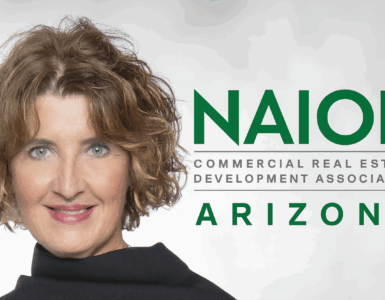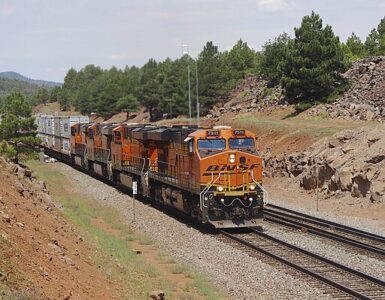Before Rosalee Darby began managing the Yavapai County Fair in 2015, the annual event had been struggling. Facing bankruptcy in the early 2000’s, the event relocated from its historic Prescott location to a new space in Prescott Valley, where it struggled to reach a big enough audience, she said.
That changed once the fair returned to its original location a few years ago; since then, it’s seen exponential growth. This year’s fair, which occurred in early September, attracted over 25,000 people to Prescott, Darby said – over double the number of fairgoers the event used to have.
Darby says she believes that amount of visitor traffic can have a major impact on the city and county.
“It brings to light what’s available in our community,” she said. “On top of that, you have the additional hotel rooms, the eating out… just the general revenue that we bring in during the time that the fair’s going on to the community.”
But while any large event is likely to have some sort of economic ripple on its community, the precise scope of that impact may not always be clear, vary from county to county, or may not be actively tracked in tangible ways.
“In general, special events are an important part of Prescott’s tourism economy, and we value the Yavapai County Fair as one of those events,” said John Heiney, Community Outreach Manager for the City of Prescott. “However, it is difficult to quantify the event’s actual economic contribution to the local economy.”
That’s not to say that county fairs don’t have an economic impact – rather, that the exact type of impact depends on who you ask.
From far and wide
One thing is certain — September is an incredibly busy month for county fairs across Arizona. Cochise, Yavapai, Navajo, Apache, and Gila are just some of the counties that have hosted (or are planning to host) their own distinct events sometime within the month. While bigger events like the Arizona State Fair don’t open their gates until later during the fall, or even until spring, many rural counties schedule their events back-to-back with each other during a single month.

There are multiple reasons for that, Darby said. Arizona’s weather is a big one – too early in the fall means hot temperatures that can cause fair animals (and guests) to overheat, if it doesn’t turn them away entirely. Too late into the season, on the other hand, and inclement rain or snow could financially decimate an outdoor fair, she said.
Another reason for cramming so many county fairs into the month of September is because it makes working with vendors and carnival equipment operators easier.
“They don’t want to be dead for a week… they want to be working constantly,” Darby said. “If I can route an entertainer to three fairs in a row, sometimes that can take five or six hundred dollars off the bill for each one of us.”
Unfortunately, pipelining vendors and talent from one major county fair to another can mean that smaller fairs may have a harder time attracting businesses.
“It is a challenge for those smaller fairs, like Northern Gila and Apache,” Darby said. “They kind of can’t get the major vendors because a big county like myself is going on.”
Despite the difficulties smaller fairs may face, some of them achieve attendance levels greater than those of larger counties. For example, the 2018 Cochise County Fair attracted over 35,000 attendees, compared to roughly 25,000 attendees at the 2019 Yavapai County Fair.
That’s despite Cochise County housing an estimated 105,000 fewer people, according to U.S. Census Data, implying that there isn’t necessarily a correlation between county size and fair attendance.
Nikki Valenzuela, general manager of the Cochise County Fair, says she believes many fair attendees don’t necessarily reside in the county.
“Because we’re a border town, we get a lot of fairgoers that come from Mexico, and we also get a lot from New Mexico,” she said.
Valenzuela said that the fair is also attended by students from the University of Arizona and Texas A&M. In 2015, over 63 percent of attendees and participants at the Cochise County Fair came from beyond Cochise County, a survey found.
The Yavapai County fair, on the other hand, mostly attracts people from within what locals call the Quad Cities region – folks from Prescott, Prescott Valley, Chino Valley, and Dewey-Humboldt, Heiney said.
“It definitely does bring in folks who live in more rural settings to Prescott,” he said. “A lot of participants in the fair, we find, are coming from Chino Valley especially.”
Darby says she even knows of people who visited the Yavapai County Fair all the way from Phoenix to enjoy the fair’s lower prices and cooler weather.
Crunching the numbers
While not all cities and communities have hard numbers related to the economic impact of county fairs, Cochise County Fair’s 2015 survey provides some insight into what level of impact fairs can have.
In 2015, nearly 11,500 people attended the Cochise County Fair and spent about $732,000 in the city of Douglas. Only about 24 percent of that spending (around $176,000) was spent at the fair itself. Attendees also spent over $332,000 on food and retail, nearly $139,000 on recreation and entertainment, and about $65,000 on lodging.

All that spending generated over $11,000 in sales tax for Douglas in 2015, over the course of only a few days. And because the Cochise County Fair has tripled its annual attendance since then, those numbers have also likely seen a substantial boost.
“The fair brings with it a significant economic impact through the number of visitors, total spending, and local sales tax revenues, particularly for the City of Douglas,” said Amanda Baillie, a public information officer for Cochise County. “It’s a great way to attract people to come down to Douglas and experience not just the fair, but the community of Douglas as well.”
It’s because of that economic impact that the Cochise County Board of Supervisors provides $25,000 in funding to the fair every year, Baillie said.
“One of the main strategic priorities for the board is economic development in Cochise County,” she said. “Anything that helps to support local businesses, to bring people into our restaurants, hotels, and to experience what we have to offer in the county… is something that the board strongly supports.”
While the Yavapai County Fair did not have similar data readily available, Heiney says “tourism is right up there” on the list of Prescott’s key industries. A study the city conducted a few years ago revealed that 61 percent of all credit card expenditures in Prescott originated from people who lived elsewhere.
Unlike in Cochise County, however, Heiney said he doesn’t think the Yavapai county fair drives substantial hotel traffic; rather, that most people visiting Prescott for the fair are making day trips.
“I’ve talked to a few hotel folks… generally this doesn’t have a major impact on the hotels here, probably because we’re so centralized,” he said.
Heiney said he’s heard anecdotal evidence from local restaurants that the fair can lead to increased business, but that doesn’t seem to be the case across the board. Brealynn Fleener, Assistant General Manager of Gurley Street Grill in downtown Prescott, said their sales during the county fair were similar to those of any other weekend.
“I took my niece to the fair, and we ate there,” she said. “People are getting excited for fair food rather than eating out before they go the fair… or maybe it’s just more convenient while they’re there.”
According to the owner of a restaurant near the Yavapai County Fair (who requested anonymity to protect their business), many fair attendees were parking at their restaurant without purchasing anything and then walking over to the fair.
“I wouldn’t say that it hurt us, but did it really help us?” they said. “I really didn’t see any influx of business because of it.”
One area where the Yavapai County fair does create economic opportunities is for its small business exhibitors, who get to promote their products and services to a large audience of visitors, Darby said.
“I have a home inspection company that advertises, and just during the fair week… several people shared with her that, hey, I saw your banner, I had no clue that you were a part of the county fair,” she said. “That’s the economic impact I think it brings.”
The intangible impact
The ability of county fairs to drive economic activity is far from the only type of impact they can have, according to Douglas city manager Jerene Watson. Just as important, she said, is how they place a spotlight on the talent within Arizona’s rural counties.
“Sometimes when there’s no other amenities like in the big metro areas, kids get more into the 4-H, the Future Farmers of America, the scouting groups… and they learn some of these trades and skills that you don’t always learn in bigger cities,” she said. “So, I think it’s a showcase for that.”
Watson says the Cochise County Fair also enables visitors to “appreciate the arts of the rural communities.” She said that Douglas’s location as a border community has led to the growth of what she sees as a vibrant art community.
“We’ve become a mini-hub for artists colonies here that are starting to grow,” she said.
Another crucial aspect of county fairs, Watson said, is the ways in which schools get students involved.
“That’s another thing that the kids look forward to — to be able to compete, whether it’s baking something and getting a blue ribbon for it, raising an animal or drawing a painting,” she said.
The Cochise County Fair has kids involved at so many different levels that it even lets them decide the fair’s theme through a contest. This year’s theme – “Cochise County May be a Square, but Not Our County Fair” – was proposed by Joshua Givens, a student at Huachuca City School. Schools from across the county will have educational exhibits at the fair that reflect the theme, according to the fair’s website.
While the educational and cultural opportunities county fairs provide may not be as easily quantified, Watson says those aspects are a crucial part of what the events are all about.
“It’s definitely kind of a big community showcase that – I think for all rural communities – is still very important,” she said.
















Add comment